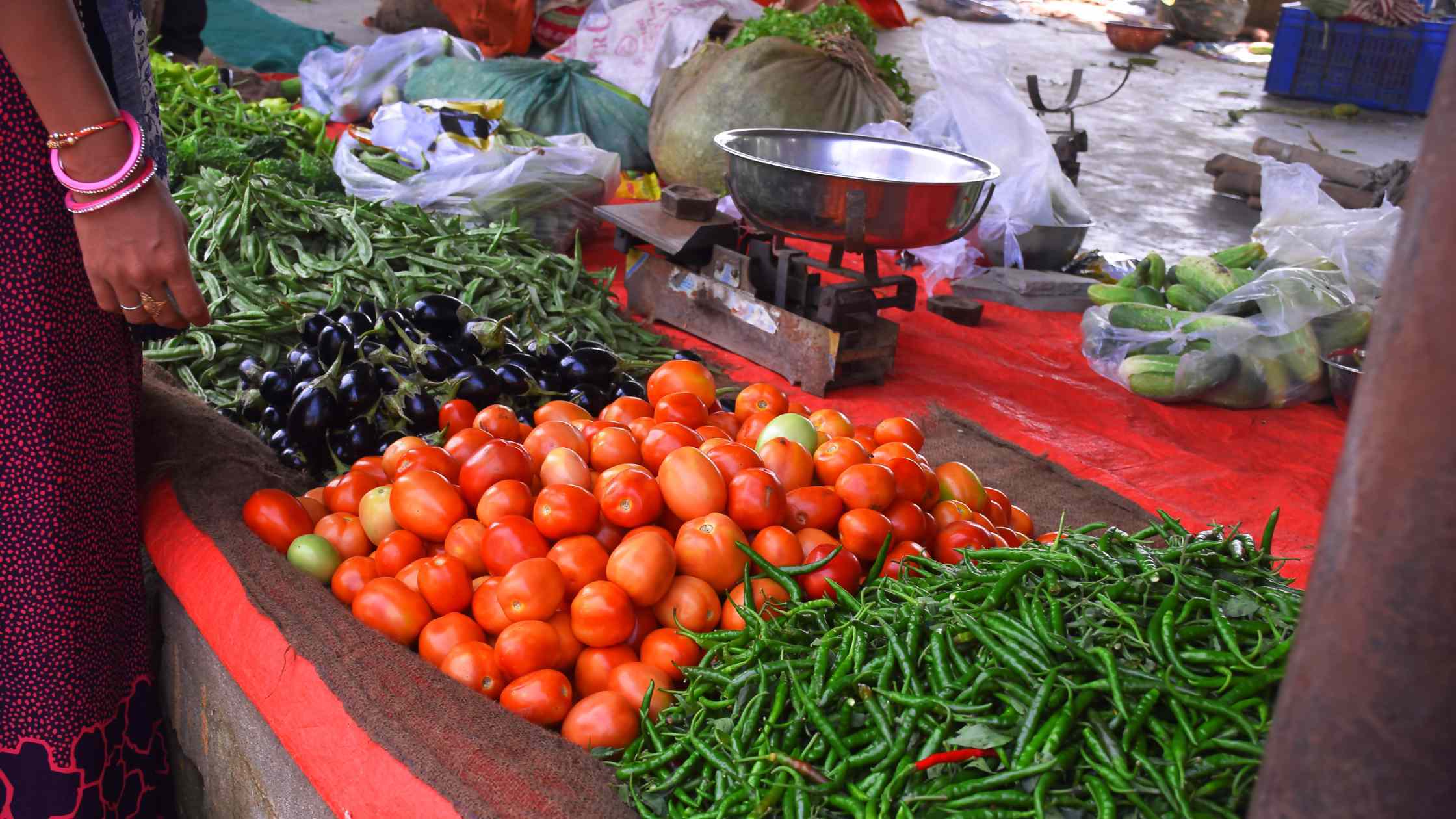Tomato prices soar in India; climate change fueling inflation
Erratic weather patterns have impacted the output of several crops, not just the tomatoes this year, making fruits and vegetables costlier.
By Editorial Team / Jun 27, 2023

Why is tomato price increasing in India?
Tomato prices have been touching the sky across India, affecting millions of households across the country. Erratic weather patterns have impacted the output of several crops, not just the tomatoes this year, making fruits and vegetables costlier.
Per kg tomato price in India today
Reportedly, prices of tomatoes surged to Rs 80 per kg across Delhi-NCR, while the prices soared even higher in Bengaluru and Kanpur up to Rs 100 per kg. Some places also saw 1 kg tomato price today rising over Rs 120 as well.
Absence of rains paved way for hot and humid weather, leading to heatwave to severe heatwave conditions over several parts of the country during April-June. Scientists as well as meteorologists have linked extreme weather patterns to climate change. Several studies in the recent past have been indicating the impact of rising global temperatures over agriculture output.
Why tomato price is increasing in India
According to a study, ‘Impact of Climate Change on Vegetable Crops and its Mitigation’, the Agriculture sector is the most sensitive sector to the climate change because the climate of a region/country determines the nature and characteristics of vegetation and crops. Under changing climatic situations crop failures, shortage of yields, reduction in quality and increase in pest and disease problems are common and they render the vegetable cultivation unprofitable.
The climatic change will affect suitability and adaptability of current cultivars by altering the growing period, affecting fruit quality as the high temperature and moisture stress increases sunburn and cracking in tomato, capsicum etc. Tomato crop fails to attain a deep red colour if the temperature is high.
Impact of global warming on tomato production
Vegetative and reproductive processes in tomatoes are strongly modified by temperature alone or in conjunction with other environmental factors.
High temperatures: The reproductive development in tomato is more sensitive to high temperatures than vegetative development. The optimum temperatures for tomato cultivation are between 25ºC and 30ºC during the photoperiod and 20ºC during the dark period. However, only a 2-4ºC increase in optimal temperature adversely affected gamete development and inhibited the ability of pollinated flowers into seeded fruits and thus, reduced crop yields.
High temperatures also interfere with floral bud development due to flower abortion. This can cause significant losses in tomato productivity due to reduced fruit set and smaller and lower quality fruits. In addition, significant inhibition of photosynthesis occurs at temperatures above optimum, resulting in a considerable loss of potential productivity. Fruit colour has significant importance in assessing the marketable quality of tomatoes. The optimum temperature for the development of lycopene pigment in tomatoes is 21-24ºC. Degradation of lycopene starts at above 27ºC, and it is destroyed at 40ºC. Similarly, high temperatures above 25ºC affect pollination and fruit set in tomatoes.
Low Temperatures: While what is being witnessed this year was on account of increasing heat stress, low temperatures (decreases to 8-12°C) also have been reported to reduce seed germination and growth speed of pollen tube and the percent of fruit set of tomato.
Flooding: Water logging is a serious problem which affects crop growth and yield in low lying rain fed areas. The main cause of damage under water logging is oxygen deprivation which affects nutrient and water uptake so the plants show wilting even when surrounded by excess water. Lack of oxygen shifts the energy metabolism from aerobic mode to anaerobic mode. Flooded crops especially in tomato plants accumulate endogenous ethylene that causes damage to the plants. The rapid development of epinastic growth of leaves is a characteristic response of tomatoes to water-logged conditions and the role of ethylene accumulation has been implicated. The severity of flooding symptoms increases with rising temperatures; rapid wilting and death of tomato plants is usually observed following a short period of flooding at high temperatures.
Salinity: Salt stress also causes changes in a range of metabolic processes. In mature tomato fruit the amount of sucrose and the activity of sucrose phosphate synthase increased while fruit yield decreased under saline conditions. High salt concentration also causes an ionic imbalance and osmotic shock to tomato plants.
Climate change impacting the food systems
To mitigate the adverse impact of climate change on productivity and quality of vegetable crops there is need to develop sound adaptation strategies. We need to stress on development of production systems for improved water use efficiency adaptable to the newly developed hot and dry weather conditions. Scientists have called for adapting crop management practices like mulching with crop residues and plastic mulches that help in conserving soil moisture. Excessive soil moisture due to heavy rain becomes a major problem which can be overcome by growing crops on raised beds. Breeding techniques and biotechnology are essentially required to meet these challenges.
Climate ChangeGlobal WarmingTomato Price RiseHeatwave in India

